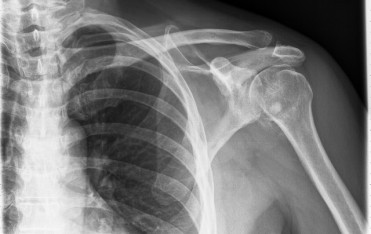Scapular retraction refers to pulling the shoulder blades towards the spine (see more from me on this subject here). This is critical to proper posture, which in turn is hugely important for shoulder health. The bent over reverse fly is a great way to work this critical skill.
This exercise is a great way to work on your scapular retraction. As you can see in the video, when my arms come up, my shoulder blades pinch together. That’s it!
Here are the important things to keep in mind while doing this exercise:
1. This exercise is performed in the bent over position. This creates flexion at the hip (known as a hip-hinge). As a general rule, the more the hip is flexed, the harder it is to retract the shoulder blades. A lot of the best gym activities require a combination of hip flexion and shoulder retraction – exercises such as the squat or the deadlift. Thus, because this exercise specifically combines both, it can really help to clean up the technique on those exercises.
2. Hip flexion can be difficult. Make sure that the spine is straight, especially in the low back area. Also, notice that my head is facing forward but not hanging. It is pulled back into a neutral position. Bending the back and hanging the neck puts pressure on the spine and reduces the effectiveness of the exercise, so keep the position strict.
3. Because it is difficult to retract while in hip flexion, the body will try to compensate and make things easier. Make sure that as you are doing the reps you don’t start standing up out of your flexed hip position. Also, keep the shoulders down, away from your ears – no shrugging! Keep the arms coming straight out to the sides and do not allow them to drift down.
4. Finally, notice that the start position is palms facing forward. This externally rotates the shoulders, allowing the movement to happen naturally. Do not start with the palms facing in or back.
Try 3 sets of 10. I bet you wake up sore the next day!
RELATED:
Retraction, Protraction, Elevation, Depression, and Scapulohumeral Rhythm
Deload and Align: Reducing Chronic Pain and Injuries
